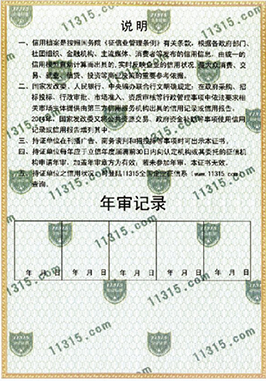- Arabic
- French
- Russian
- Spanish
- Portuguese
- Turkish
- Armenian
- English
- Albanian
- Amharic
- Azerbaijani
- Basque
- Belarusian
- Bengali
- Bosnian
- Bulgarian
- Catalan
- Cebuano
- Corsican
- Croatian
- Czech
- Danish
- Dutch
- Afrikaans
- Esperanto
- Estonian
- Finnish
- Frisian
- Galician
- Georgian
- German
- Greek
- Gujarati
- Haitian Creole
- hausa
- hawaiian
- Hebrew
- Hindi
- Miao
- Hungarian
- Icelandic
- igbo
- Indonesian
- irish
- Italian
- Japanese
- Javanese
- Kannada
- kazakh
- Khmer
- Rwandese
- Korean
- Kurdish
- Kyrgyz
- Lao
- Latin
- Latvian
- Lithuanian
- Luxembourgish
- Macedonian
- Malgashi
- Malay
- Malayalam
- Maltese
- Maori
- Marathi
- Mongolian
- Myanmar
- Nepali
- Norwegian
- Norwegian
- Occitan
- Pashto
- Persian
- Polish
- Punjabi
- Romanian
- Samoan
- Scottish Gaelic
- Serbian
- Sesotho
- Shona
- Sindhi
- Sinhala
- Slovak
- Slovenian
- Somali
- Sundanese
- Swahili
- Swedish
- Tagalog
- Tajik
- Tamil
- Tatar
- Telugu
- Thai
- Turkmen
- Ukrainian
- Urdu
- Uighur
- Uzbek
- Vietnamese
- Welsh
- Bantu
- Yiddish
- Yoruba
- Zulu
Nov . 16, 2024 17:21 Back to list
automotive drive belts
Understanding Automotive Drive Belts Their Importance and Function
Drive belts are crucial components in the operation of modern vehicles, playing an essential role in transferring power from the engine to various accessories. These belts are designed to facilitate smooth functioning and higher efficiency within the vehicle's powertrain. In this article, we will delve deeper into the types of drive belts, their functions, signs of wear, and maintenance tips.
Types of Drive Belts
There are generally two main types of drive belts in automobiles serpentine belts and V-belts.
1. Serpentine Belts These are long, continuous belts that can drive multiple components at once. A serpentine belt is usually made of rubber and features grooves that fit into the pulleys they connect. Typically, a serpentine belt drives the alternator, power steering pump, water pump, and, in some vehicles, the air conditioning compressor. The advantage of a serpentine belt is that it simplifies the drive system by replacing multiple belts with a single, more efficient belt.
2. V-Belts While similar in function to serpentine belts, V-belts are designed to fit into wedge-shaped grooves on the pulleys. They are typically used in older vehicle models and often connected to one or two accessories at a time. V-belts can be easier to replace due to their simpler design but may not offer the same efficiency as serpentine belts.
Functions of Drive Belts
Drive belts play several critical roles in vehicle operation. They aid in controlling the engine’s accessory functions, including
- Alternator The drive belt powers the alternator, which in turn generates electricity to recharge the battery and power electrical systems while the engine is running. - Power Steering Pump This component assists in steering control by making it easier to turn the steering wheel. - Water Pump The water pump is essential for coolant circulation within the engine, helping to maintain optimal operating temperatures and preventing overheating.
automotive drive belts

- Air Conditioning Compressor This component ensures the vehicle’s air conditioning system functions effectively, providing comfort during hot weather
.Signs of Wear and Tear
Like any mechanical component, drive belts can wear out over time. Regular inspection is necessary to ensure they are functioning effectively. Some signs of a failing drive belt include
- Squeaking or Chirping Noises If you hear unusual noises, it could indicate that the belt is slipping or misaligned. - Visible Cracks or Fraying Check for any signs of cracking, fraying, or pieces of rubber missing from the belt. These are indicators that the belt is nearing the end of its lifespan. - Loss of Accessory Function If electrical components like the alternator or power steering feel less effective, it might signal belt failure.
Maintenance Tips
Regular maintenance of drive belts can prolong their lifespan and ensure reliable vehicle performance. Here are some useful tips
- Regular Inspections Schedule routine inspections of your vehicle to check the condition of the drive belts. - Replace at Recommended Intervals Consult the vehicle’s owner manual for recommendations on when to replace the drive belts, generally every 60,000 to 100,000 miles. - Check Tension Ensuring the correct tension of the drive belt is crucial; too loose or too tight can cause failure.
In conclusion, understanding automotive drive belts is fundamental for vehicle owners. Being aware of their types, functions, signs of wear, and maintenance will not only enhance the performance of your vehicle but also contribute to your overall driving experience. Regular checks and timely replacements can save both time and money in the long run, ensuring that your automobile remains in peak condition.
-
Korean Auto Parts Timing Belt 24312-37500 For Hyundai/Kia
NewsMar.07,2025
-
7PK2300 90916-T2024 RIBBED BELT POLY V BELT PK BELT
NewsMar.07,2025
-
Chinese Auto Belt Factory 310-2M-22 For BMW/Mercedes-Benz
NewsMar.07,2025
-
Chinese Auto Belt Factory 310-2M-22 For BMW/Mercedes-Benz
NewsMar.07,2025
-
90916-02660 PK Belt 6PK1680 For Toyota
NewsMar.07,2025
-
drive belt serpentine belt
NewsMar.07,2025

